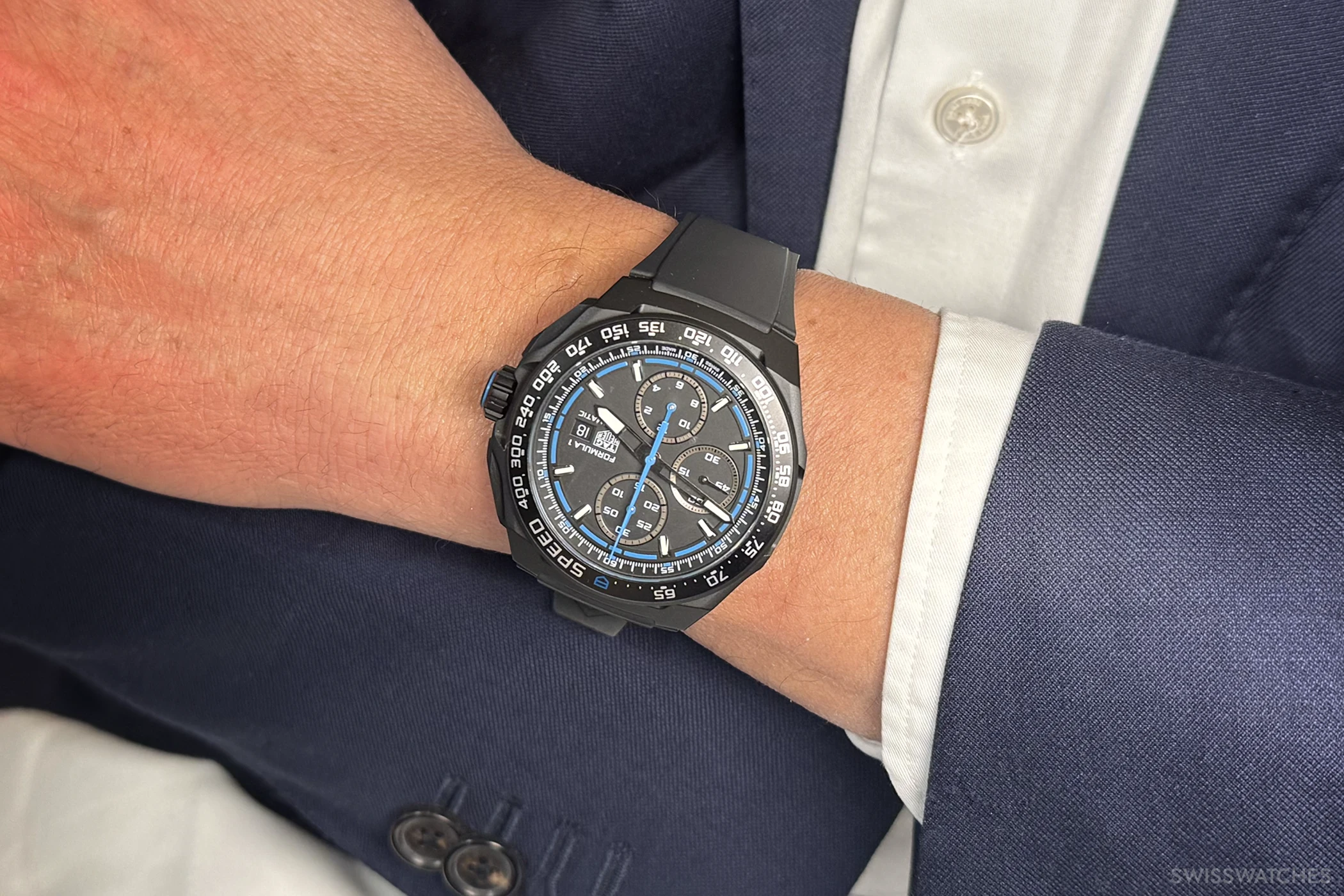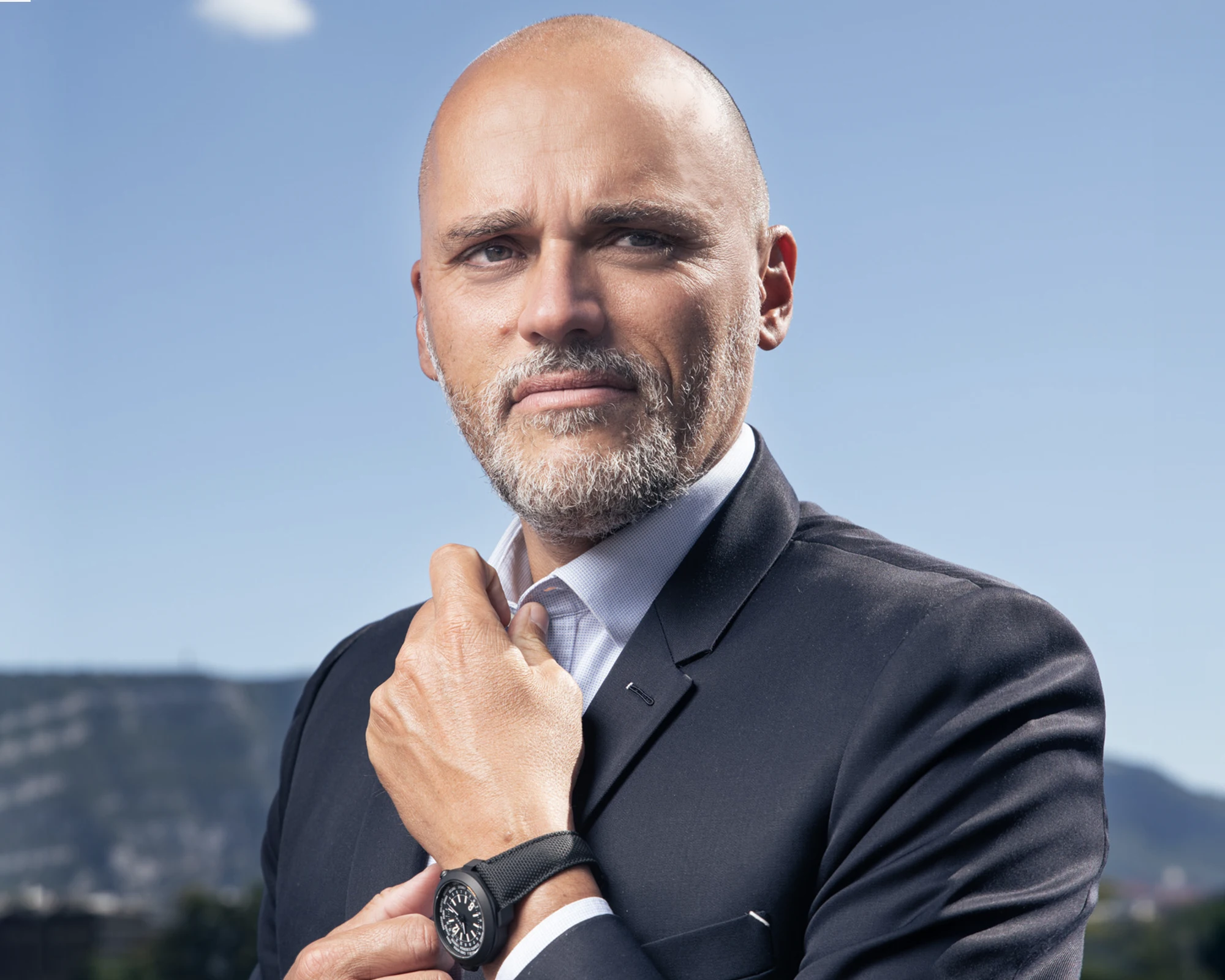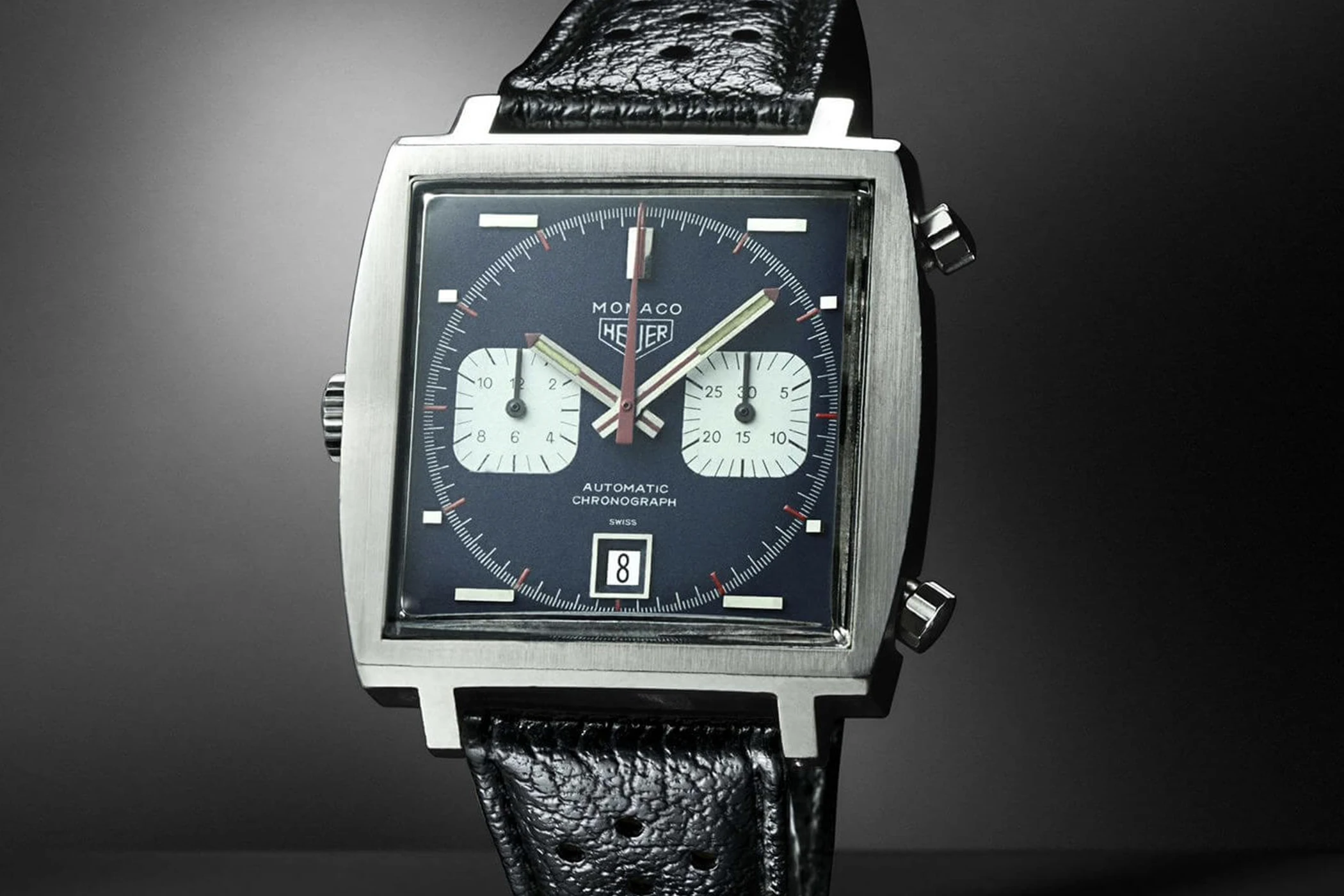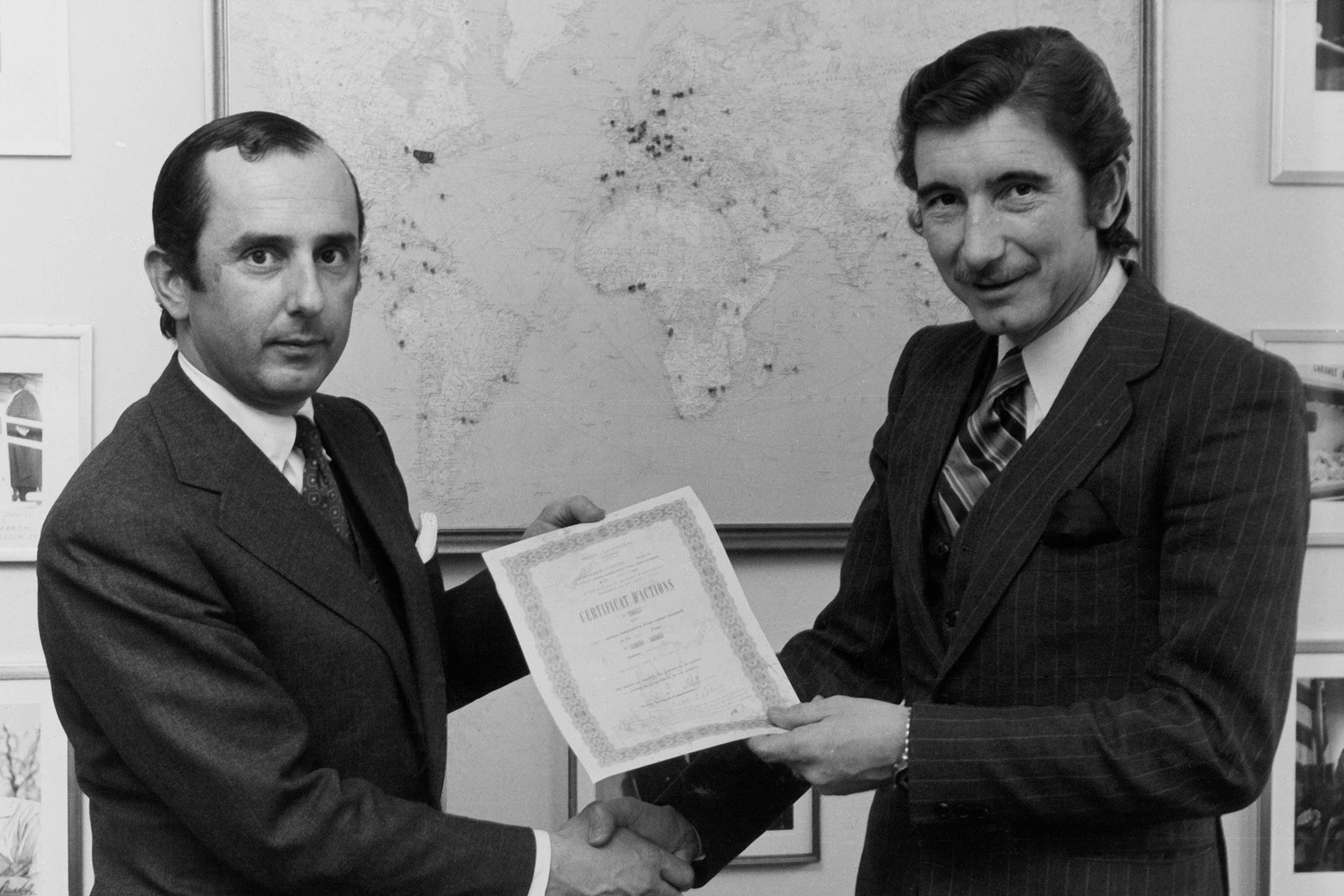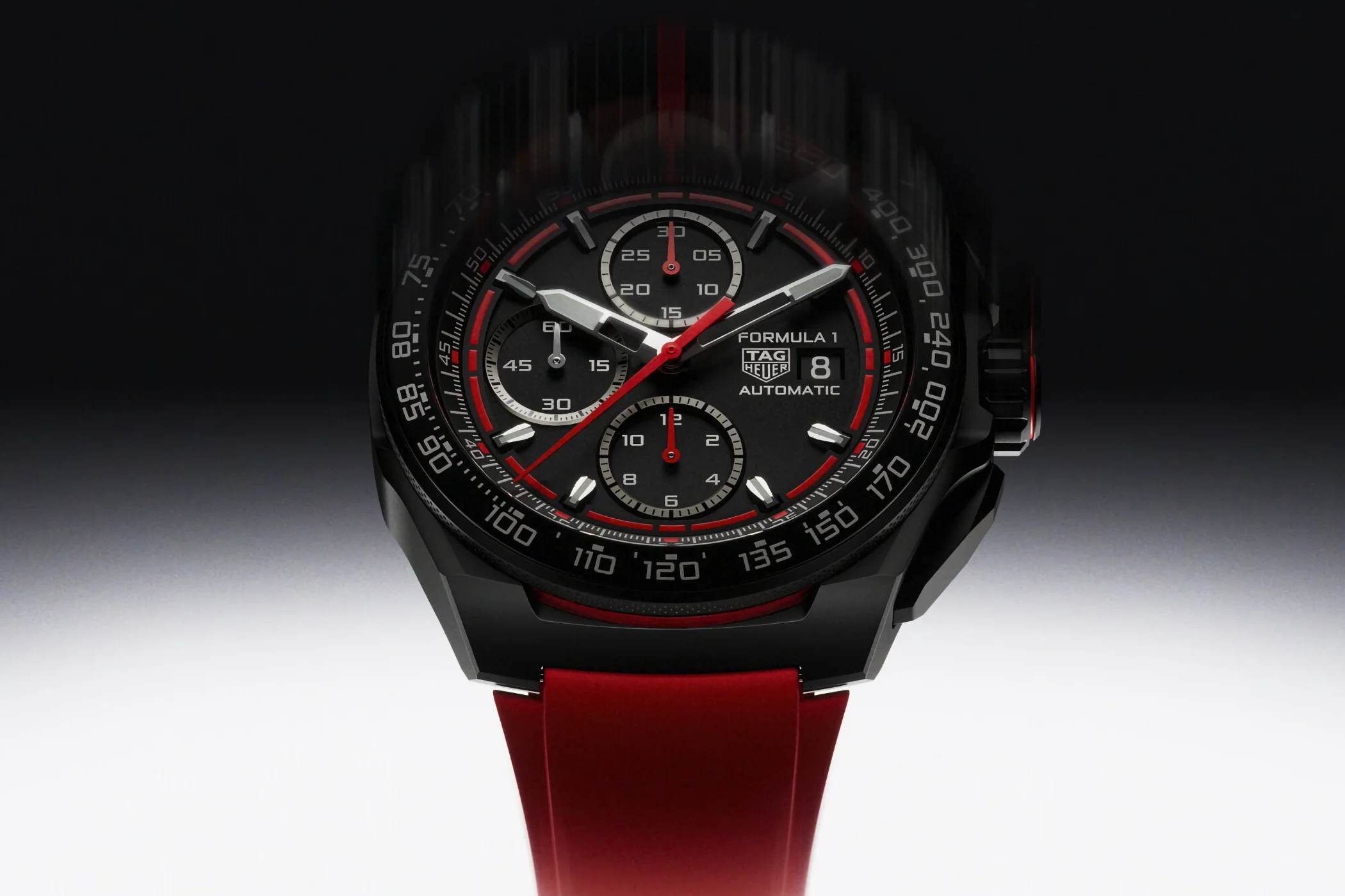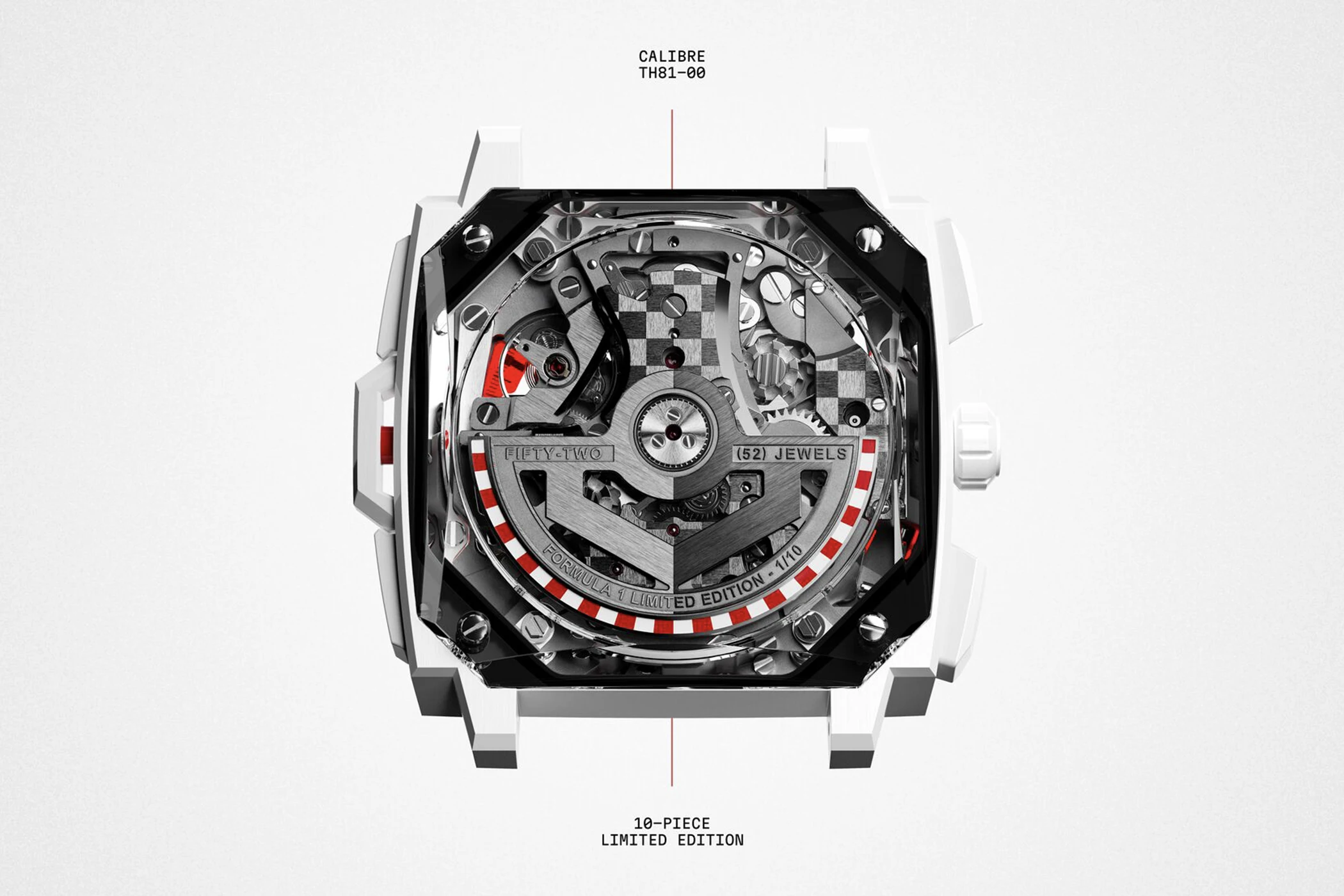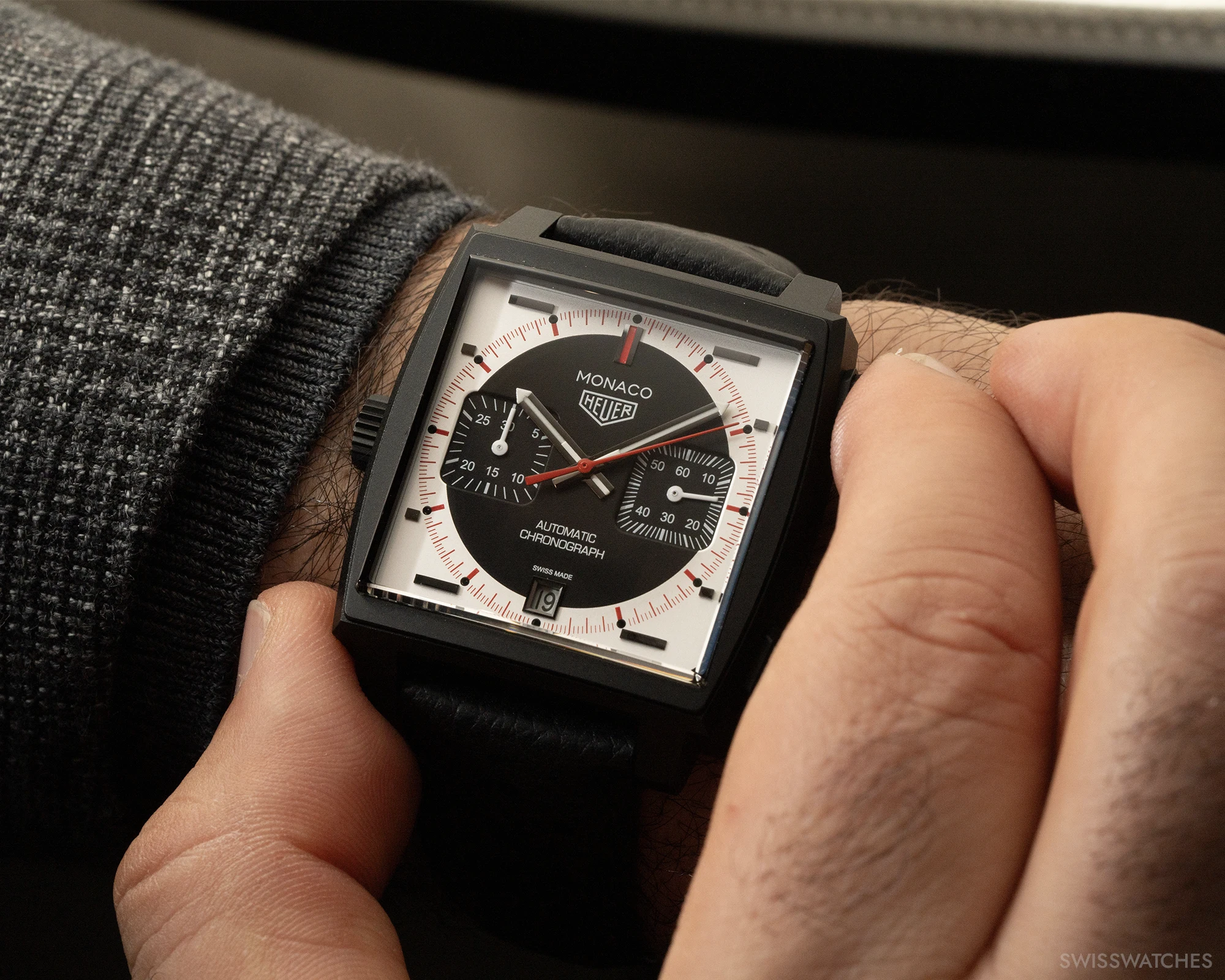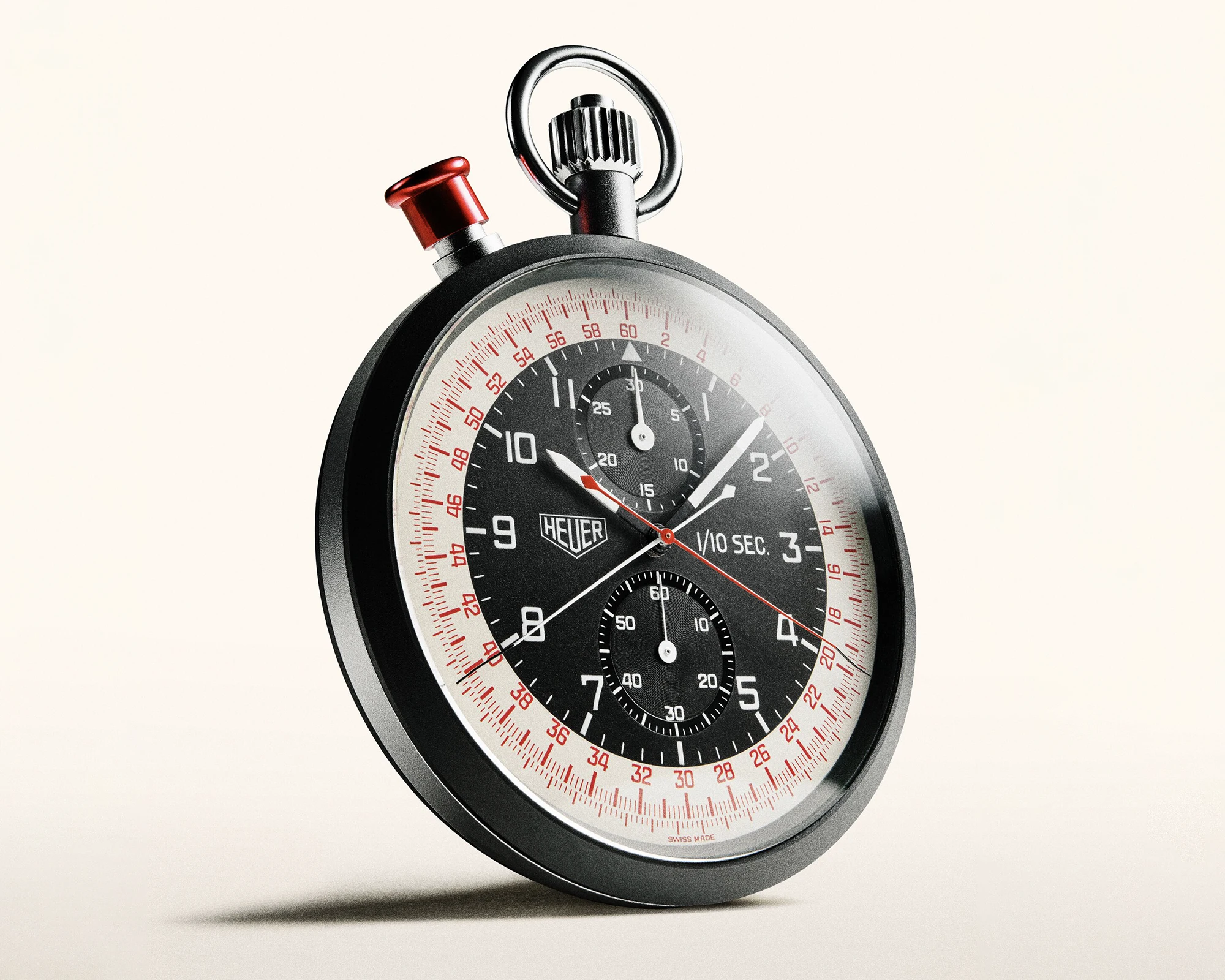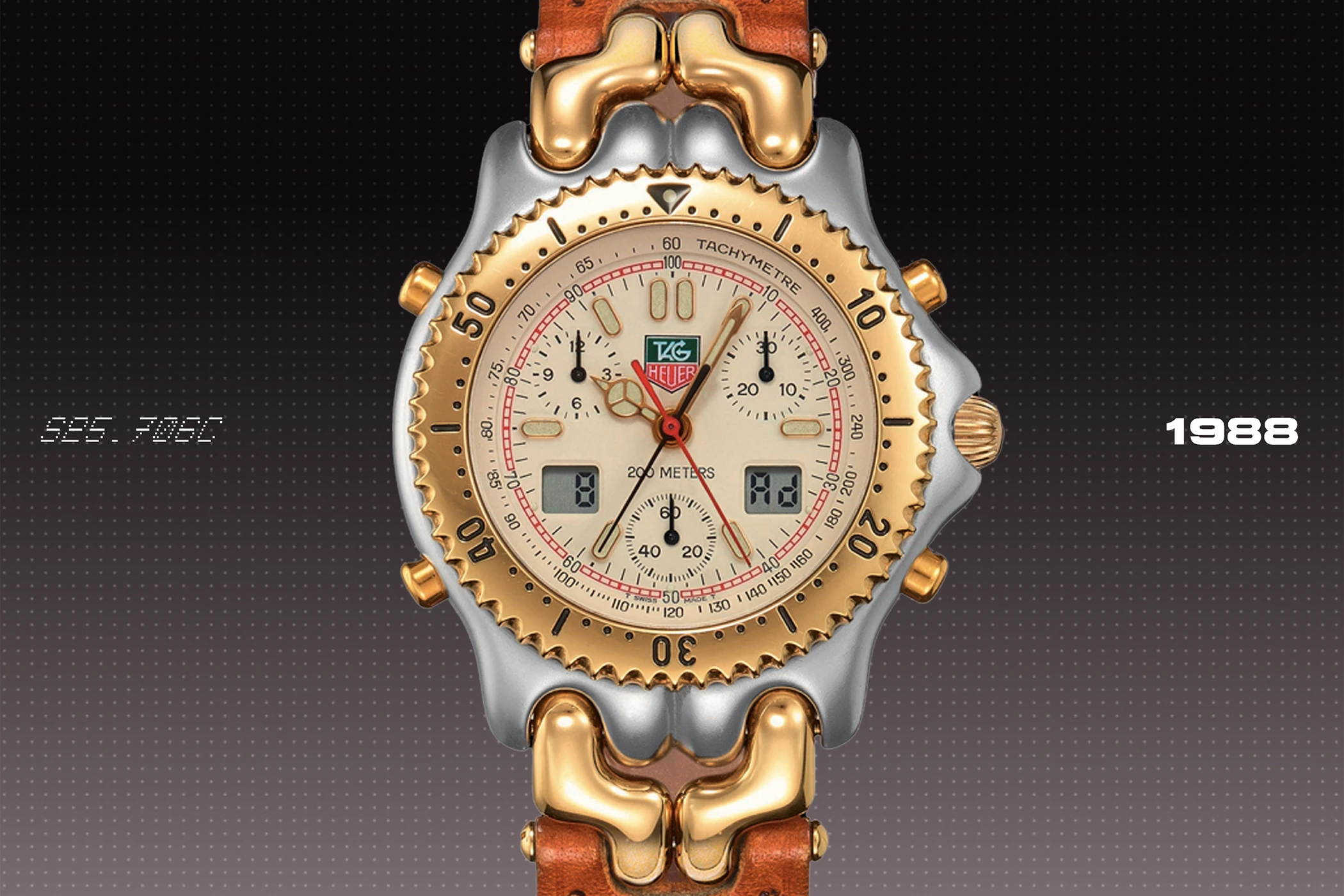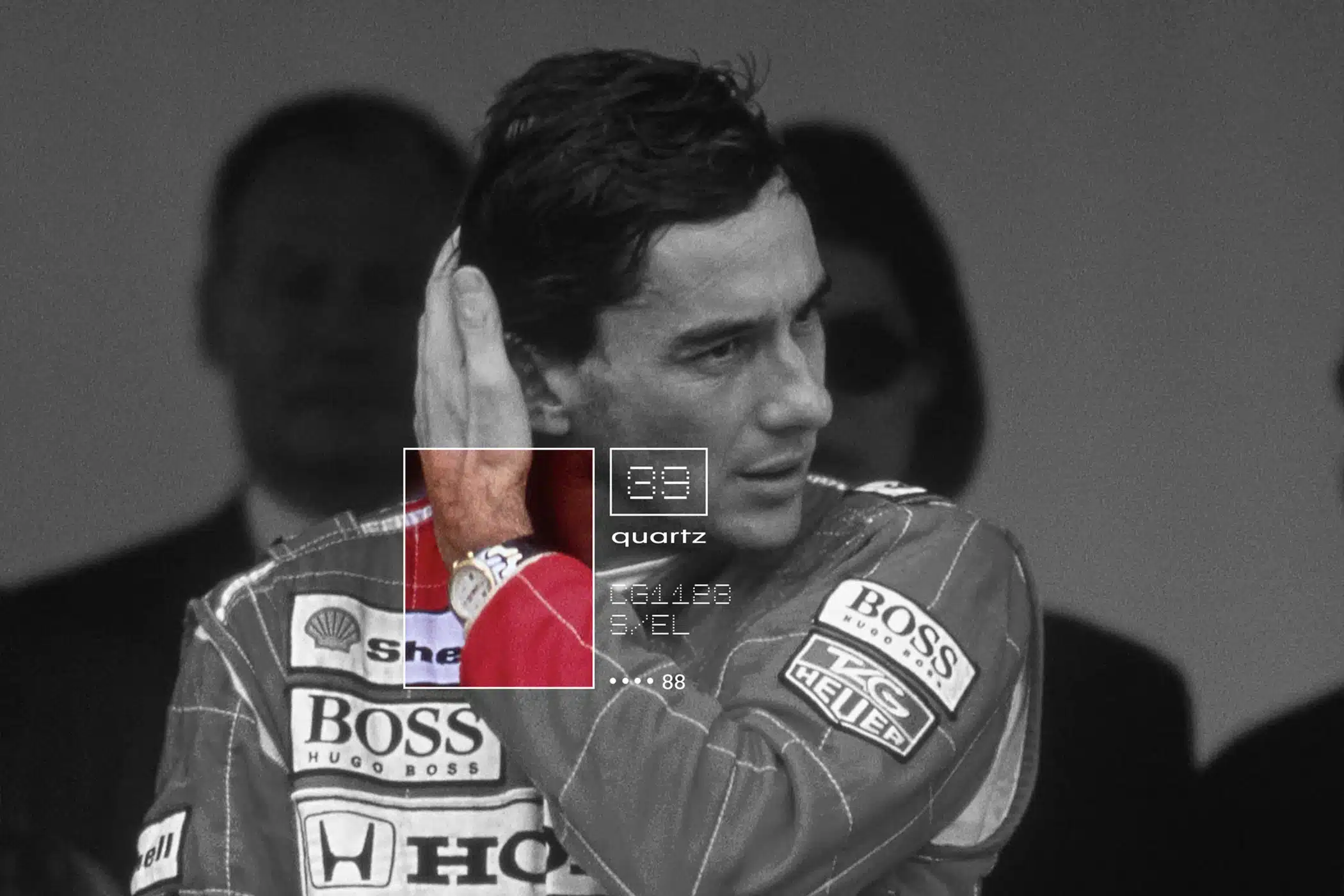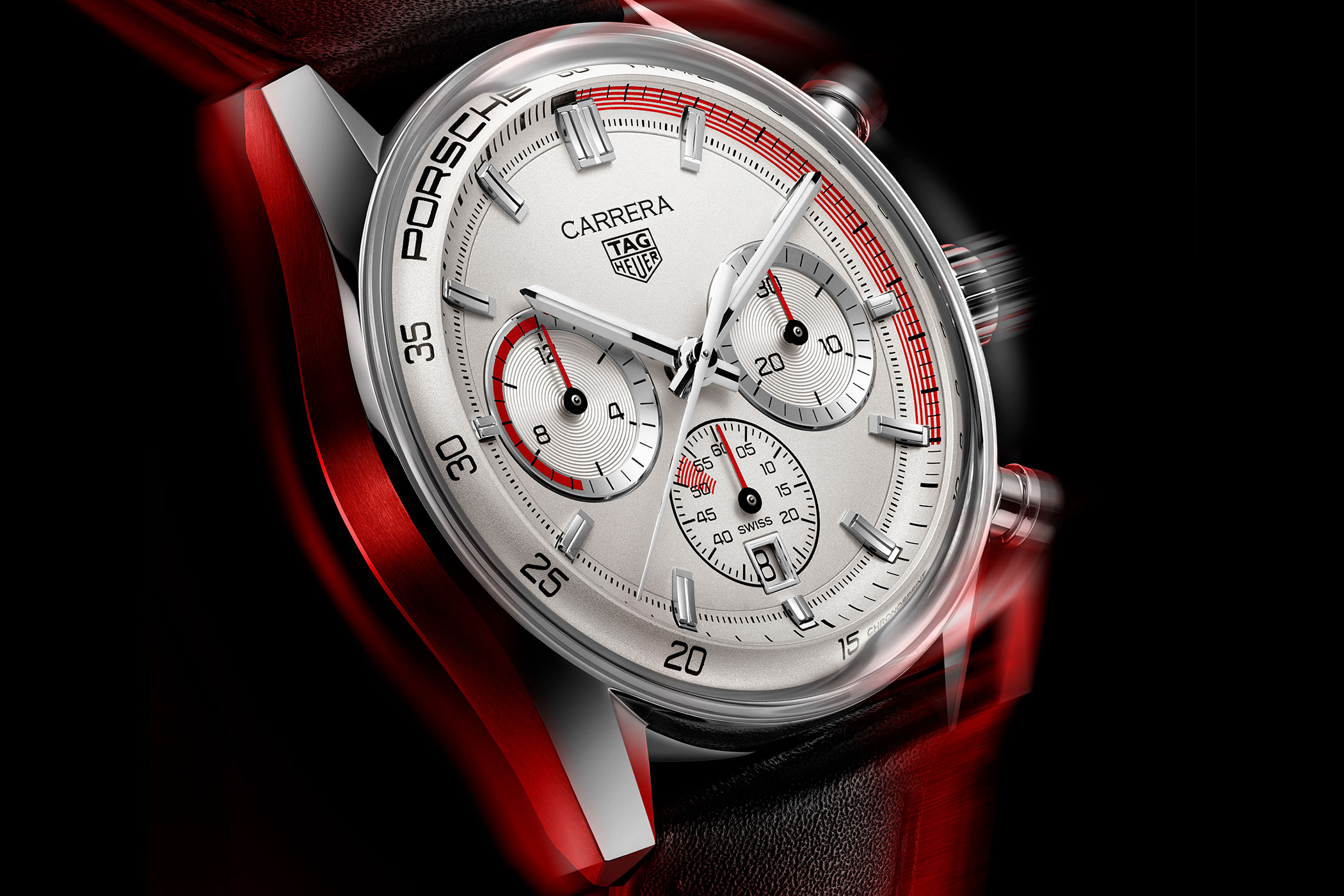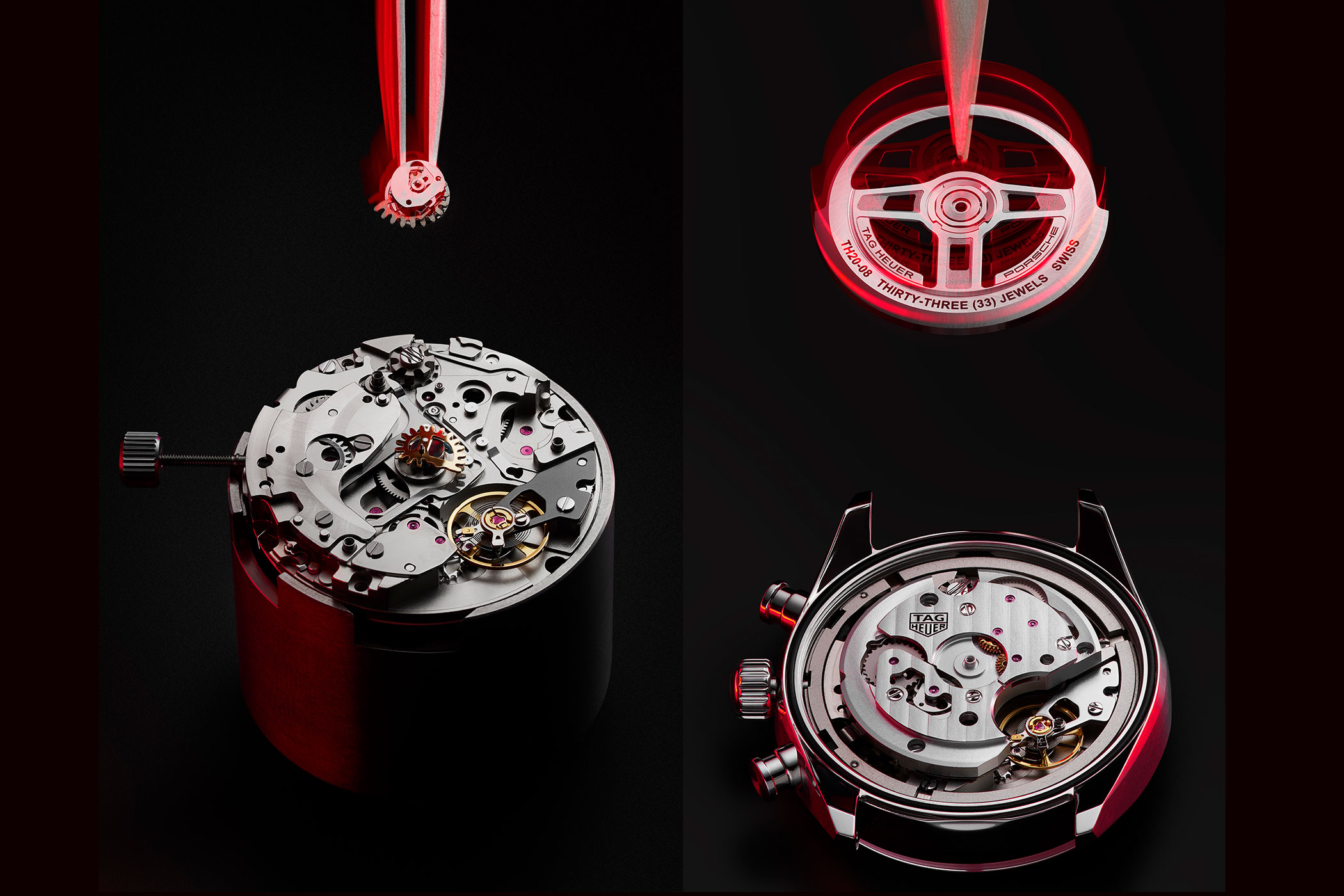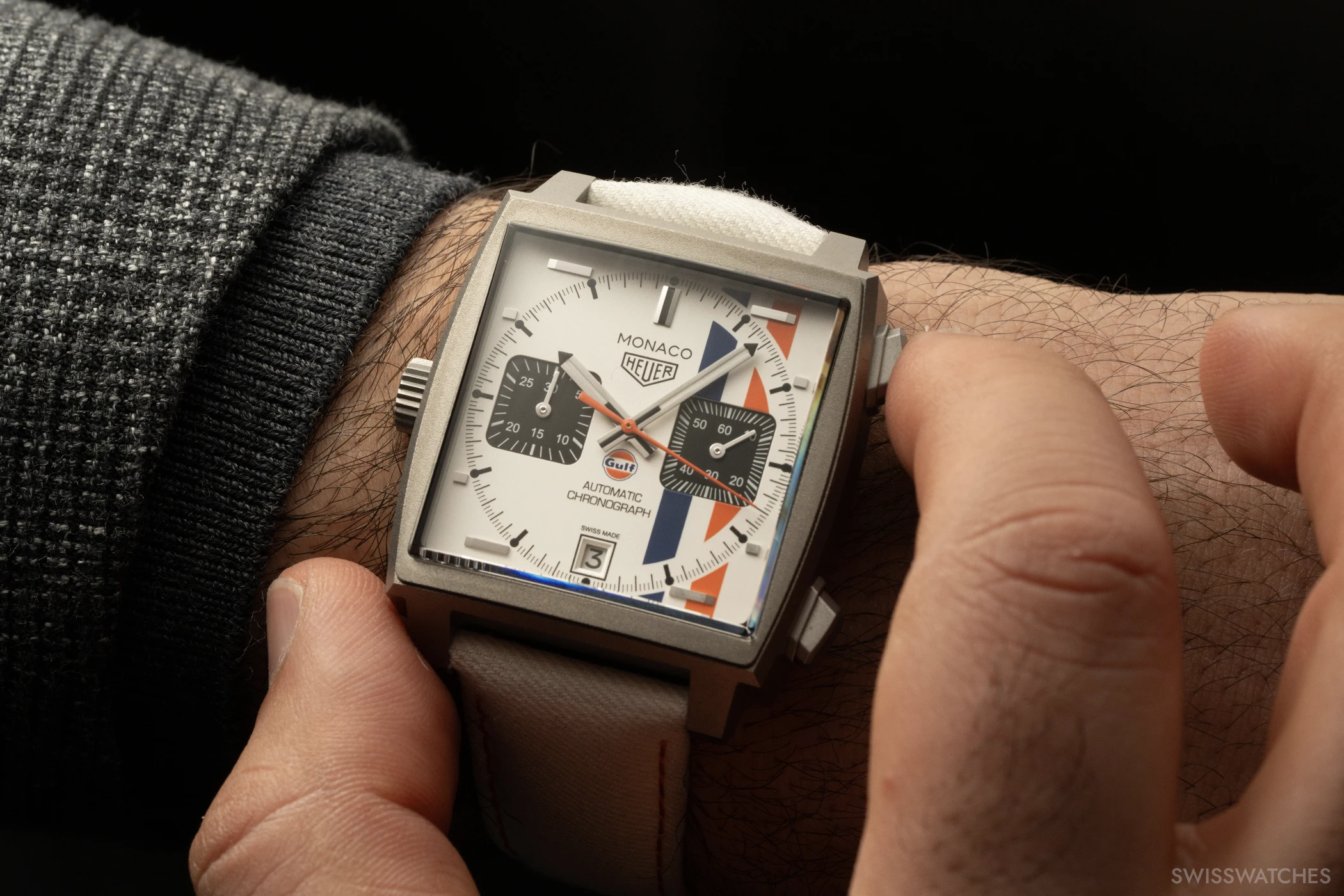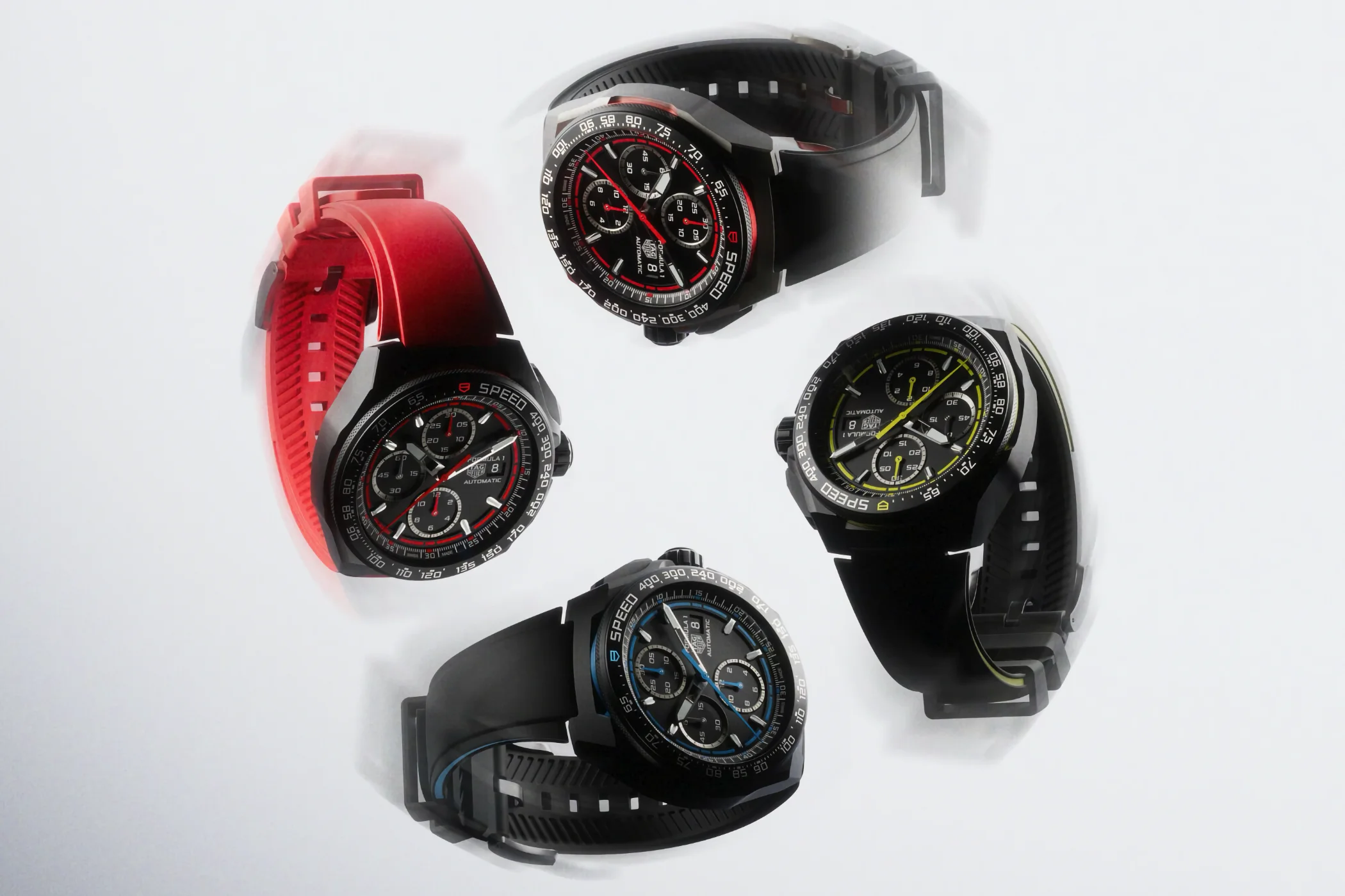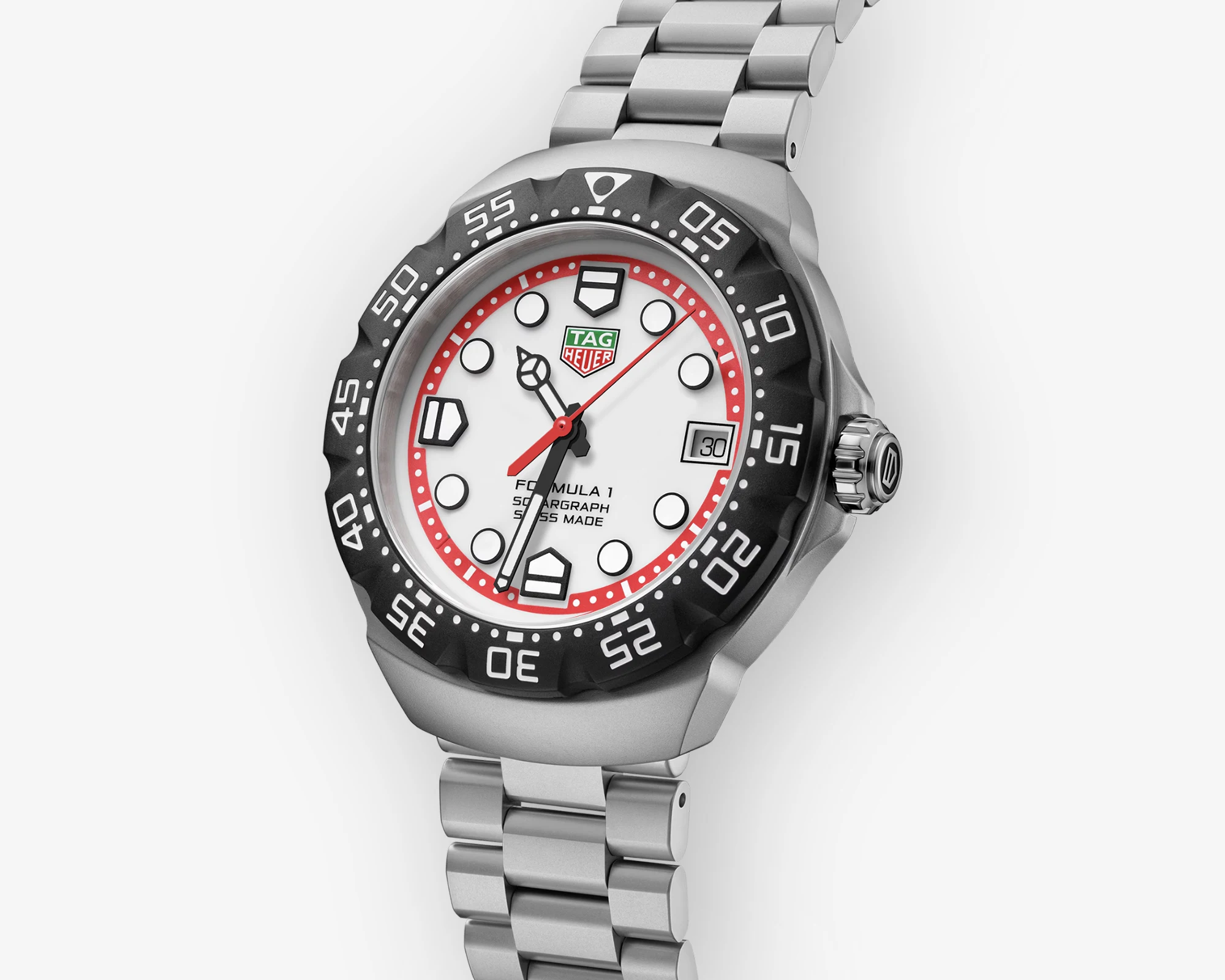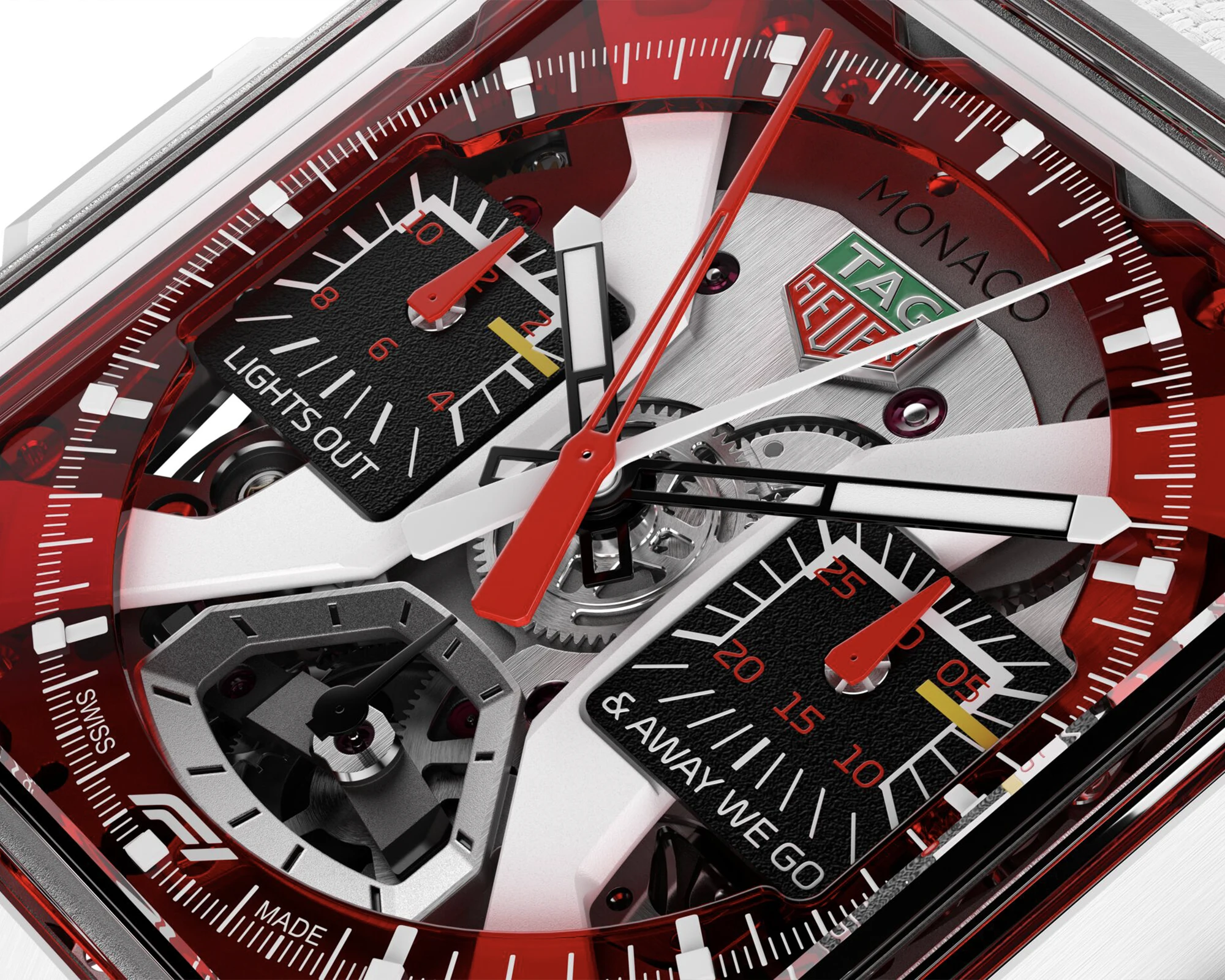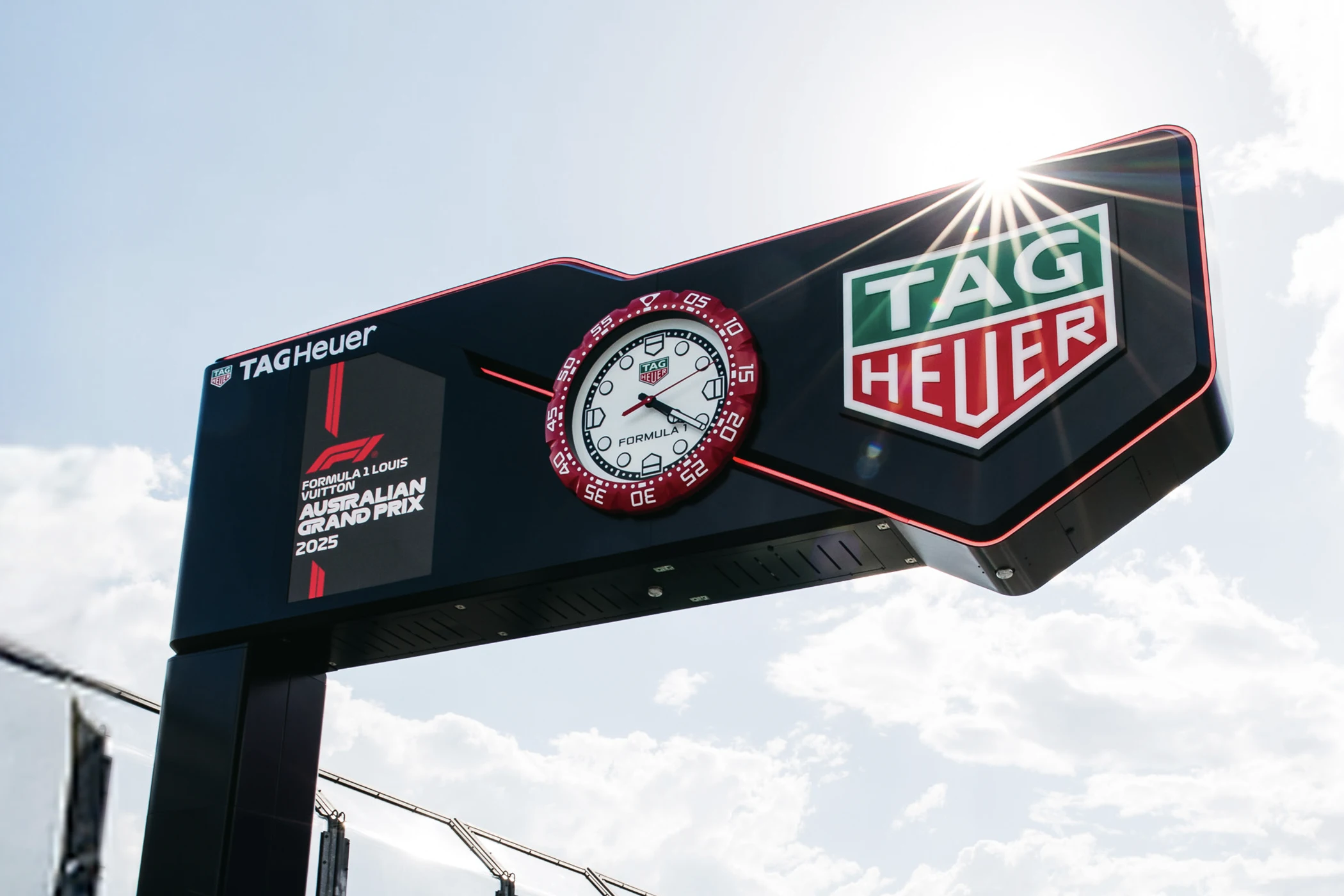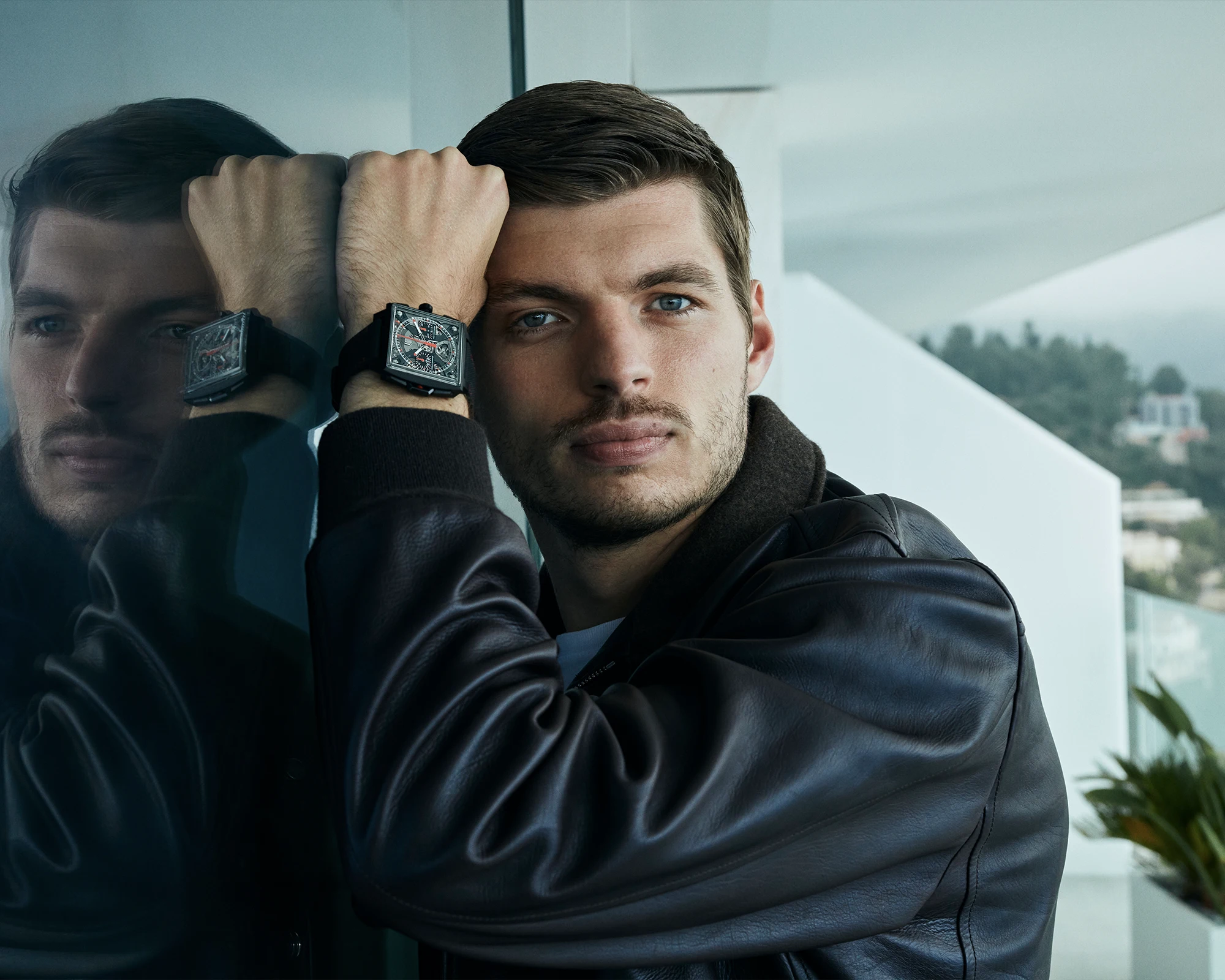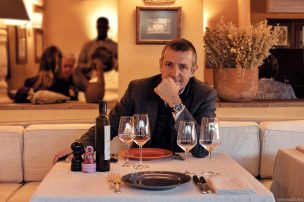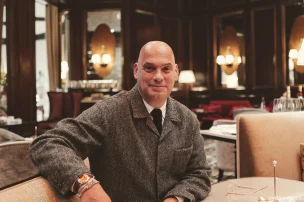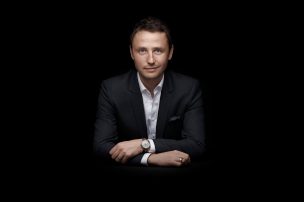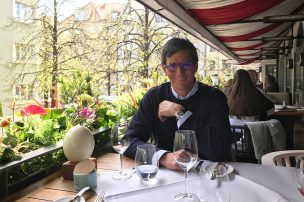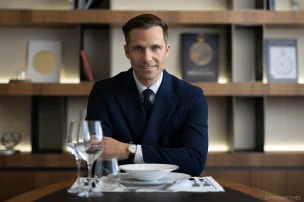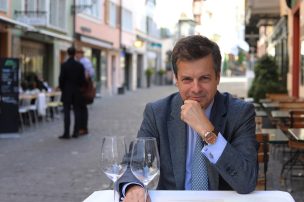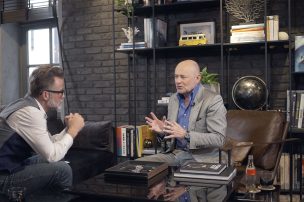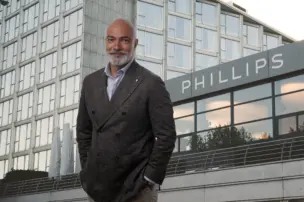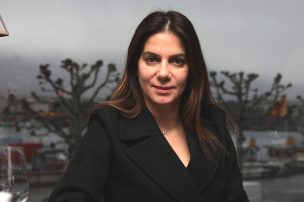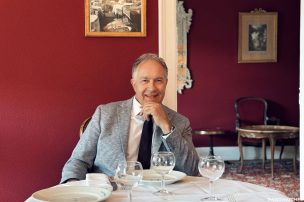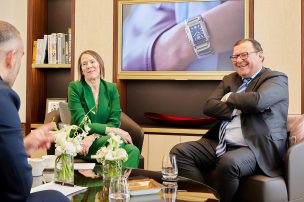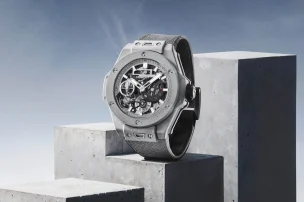
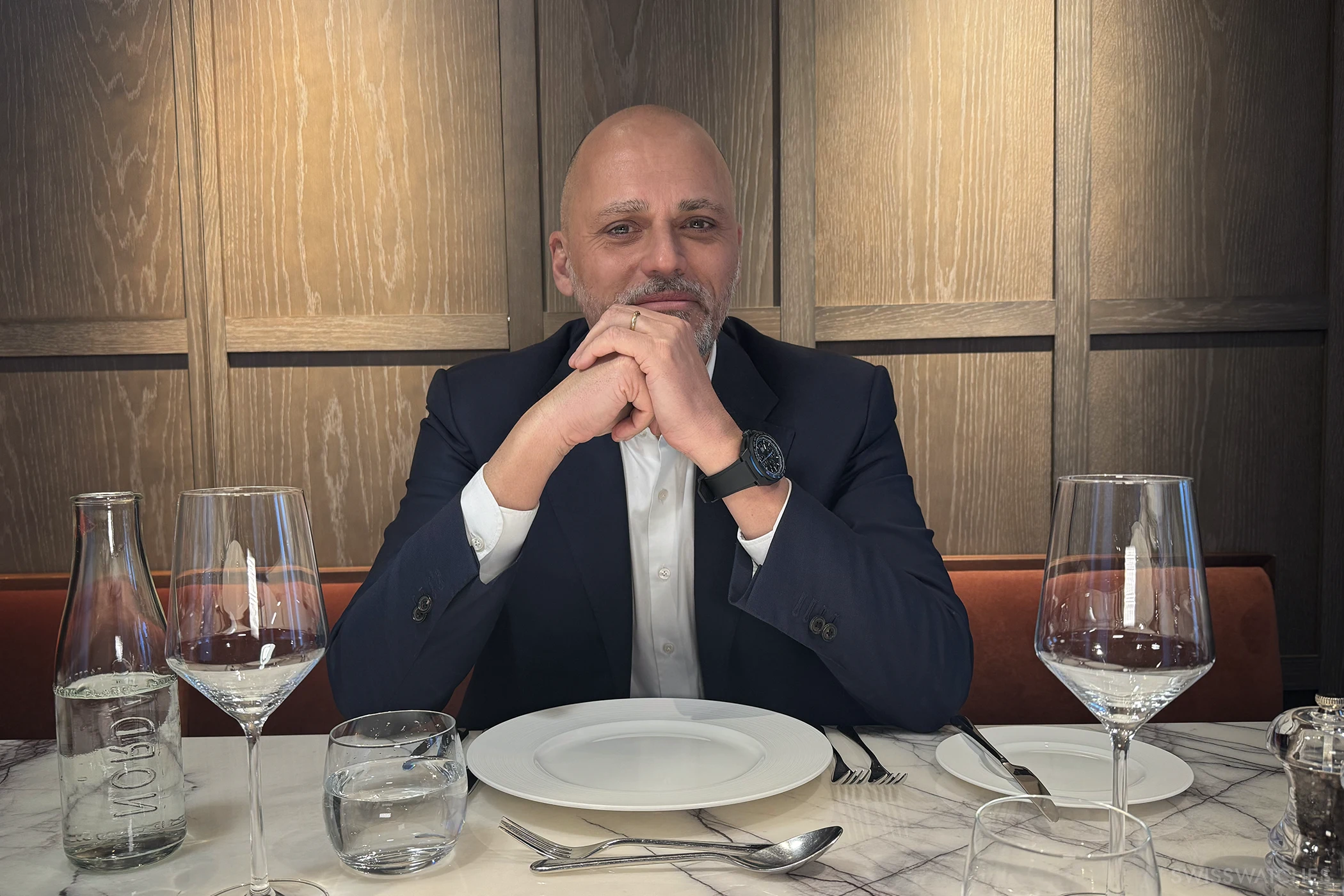
Lunch With: TAG Heuer CEO Antoine Pin
In September 2024, Antoine Pin was appointed as the new CEO of TAG Heuer, returning to the brand he worked for at the beginning of his professional career. Shortly afterwards, it is announced that TAG Heuer will replace long-time sponsor Rolex as the official timekeeper of Formula 1 in 2025. After more than 20 years, TAG Heuer is returning to Formula 1, which is celebrating its 75th anniversary this year. During the celebrations in London, we met Antoine Pin for lunch and found out what he expects from the 10-year partnership, which will cost LVMH, where TAG Heuer belongs to, around 150 million euros, what plans he has for the brand in the coming years, and what personal qualities he will contribute to the success of TAG Heuer in the future.
What does a mechanical watch mean to you and which watch are you wearing today?
Mechanical watches are incredibly symbolic of the complexity of mankind. We are truly the masters of technology; we have nuclear clocks that allow us to measure time to the millionth of a second without any difficulty. However, what I value most is the remarkable beauty and intricate nature of a mechanical piece. It follows principles of timekeeping that have been valid for centuries, representing the genuine craftsmanship of human hands and a significant part of our cultural heritage.
Today, I’m wearing the new Formula 1 Chronograph as we celebrate 75 years of Formula 1, a powerful symbol of our renewed partnership.
You have been CEO at TAG Heuer since September 2024 and previously managed Bulgari’s watch division for many years. What experience and insights do you bring with you to TAG Heuer from there?
I think I bring with me the understanding of the complexity that represents the management of a manufacture. For me the biggest challenge we are dealing with is a very specific relation to time. We are living in a very active world in which today’s news will be outdated tomorrow. And it takes us a year to produce a watch and between three to seven years to produce a new calibre. And it takes many years to build a new manufacture. So, we have to manage this hugely different kind of frequency. You have to think in long term, but at the same time you have to address the immediacy. We’re looking at the news every morning and we are expecting something to have happened during the night. And in the same time, we’re investing big amounts of money for the years 2025, 2026, 2027. We’ve just validated the calibre plan until 2031. I think what is really making life exciting is this notion of paradox, because nothing is simple. It would be simple if we just had to work on immediacy and we were able to produce overnight to satisfy the commercial needs of tomorrow, it would be simple if we didn’t have to care about the next week, the next month, the next quarter. But dealing with this complexity and this paradox is what makes our job interesting, but extremely complex. And that’s clearly what I had to deal with when I was at the head of Bulgari that I’m bringing in here as well.
And how do you adapt to these changes in your long-term strategy?
You’re obviously adapting to recent trends. But the reality is that you’re joining a maison that you trust the essence of. I trust the essence of TAG Heuer. I trust what it stands for. And when I mean I trust it means the decisions we make. They’re essentially connected to what the brand stands for. And this is our compass. Maybe we don’t always make decisions everyone agrees on in our community out there. But the reality is that we stick to what we are. And probably there’s nothing more important today than really standing for what you are. Because you are an element of reference. You are on the map of people’s spendings. They want to purchase products that are really meaningful. And to be meaningful you need to be consistent. And so, this consistency is an element of reassurance for us when we make decisions for the long run. Okay the team has not been working with me for a long time, but the number of times that I have been asking, “why are we doing it and does it make sense with what we are?” They must be fed up with me already. But it’s a never-ending story. It’s the biggest element of reassurance in these moving times.
You have worked at TAG Heuer before and know the brand very well. Is there a particular episode or event in TAG Heuer’s history that particularly impresses you?
Absolutely. One moment that has always stood out to me, and that I often come back to, is 1969, the year Jack Heuer launched the TAG Heuer Monaco, the world’s first square automatic chronograph. It truly was a bold statement in design and identity. That same year, the TAG Heuer Monaco was spotted on the wrist of Jo Siffert, one of the most charismatic drivers of his generation and our first brand ambassador. It symbolized a fearless attitude and the idea that timekeeping could be just as thrilling as the race itself. That connection between watchmaking and motorsport was authentic, and it shaped our DNA. It’s precisely that spirit that I am excited to see this year in Monaco as we make our return as Official Timekeeper of Formula 1, and now Title Partner of the Formula 1 TAG Heuer Grand Prix de Monaco.
How has the brand changed over the years?
It’s a great experience to be exposed to the different moments and clearly the massive change I see between the mid-nineties and today is the fact that TAG Heuer is a hugely integrated manufacturer. We’re mastering a large number of activities in the world of watchmaking. We are producing our own calibres. We are developing very complex avantgarde watchmaking calibres. We make our own dials and our own components. So, we are highly integrated. It was not necessarily the case when I joined the brand for the first time. At the time, there was only a small workshop and we were really only doing the final assembly of the watches, but we were buying most of the components at the time. This clearly gives a different perspective on our products. And obviously you are capitalizing on a huge sum of knowledge that at the time the brand didn’t have. And when you look at the new Formula One chronograph, it’s a complete reinterpretation of the initial product from a watchmaker perspective. The initial product was almost a marketing item, but not necessarily with a fully formed perspective from a watchmaker.
How would you describe TAG Heuer’s current positioning in the market and what goals have you set for the brand in the coming years?
TAG Heuer occupies a special space in the Swiss luxury watch landscape. We are a performance-driven, innovation-led luxury brand with deep roots in motorsport and a strong identity built over more than 160 years. Our positioning sits at the intersection of heritage and modernity, offering both mechanical mastery and forward-thinking technology while embracing a very powerful legacy. Our ambition is to dive deeper in the Haute Horlogerie segment without losing what has made TAG Heuer relevant to generations: authenticity, design boldness, and connection to culture. We see opportunity in reinforcing our differentiation through innovative calibres like the TH81-00 while also maintaining the connection with our current audience by launching the TAG Heuer Formula 1 Solargraph. There is a timepiece for all types of preferences through our different collections and this is a powerful asset. Over the next few years, the goal is to strengthen our presence in key strategic markets, grow brand desirability globally, and continue shaping TAG Heuer as a brand designed to win in the hearts of a new generation of collectors and wearers.
The watch industry is in a constant state of change, which is also challenging at the moment. How do you want to respond to these changes with TAG Heuer and adapt to new consumer needs?
It is true that the market is evolving quickly, but at TAG Heuer, we see that as an opportunity. Yes, consumers are changing as they are more informed and selective, but what has not changed is their desire for authenticity. That is where TAG Heuer has a real advantage. We have over 160 years of history rooted in performance and innovation. Our job is to bring that to life in a way that feels relevant today. Storytelling plays a huge role here. Whether it is through our icons like the TAG Heuer Carrera, TAG Heuer Formula 1 or TAG Heuer Monaco, or through our partnerships in motorsport and culture, we are creating connections with people who care about what a timepiece represents. In that sense, we are not chasing trends but staying true to who we are and inviting new generations into that world through strong narrative and consistent identity.
The development and production of new watch models is a lengthy process. How do you manage to plan the trends for the next five to seven years in today’s increasingly fast-paced world?
The foundation of our long-term planning is our legacy. At TAG Heuer, we do not try to reinvent who we are every few years, we build from a core that is already rich with meaning, design codes, and technical credibility. That gives us a stable, authentic base to project into the future. When we look five to seven years ahead, we are interpreting how the world is shifting and how TAG Heuer’s story can continue to stay relevant within it. It is about adapting our heritage with intention. We work closely across design, marketing, and product development to anticipate consumer expectations, not only in aesthetics or performance but in the experiences people are seeking from a luxury brand. Yes, the pace is faster, but we are not reacting impulsively. We are anchoring every creative decision in a DNA that already resonates deeply with our community and always will.
Can you give us an insight into TAG Heuer’s product development strategy under your leadership? Are there plans to develop new mechanical watch movements or complications?
Our product development strategy is firmly anchored in innovation, excellence, and precision. We are driven by the goal of engineering movements that tell time in a way that connects emotionally and intellectually with our audience. A perfect example is the TH20-08 Chronosprint movement, which reimagines the way we visualize acceleration by modifying the sweep of the chronograph seconds hand, a nod to the early performance of the Porsche 911, deeply anchored in our shared legacy with Porsche. Similarly, the TH81-00, one of the lightest split-seconds chronograph calibres ever made, is a big engineering moment, housed in a titanium case textured at the atomic level. These movements are part of the storytelling of our timepieces. Our internal R&D team ensures we bring these innovations to life in a way that feels uniquely TAG Heuer.
TAG Heuer is immediately associated with the TAG Heuer Carrera or TAG Heuer Monaco. Are there also plans to revive or relaunch older or even completely new lines?
The TAG Heuer Carrera and TAG Heuer Monaco remain iconic pillars of our collection, but we are always exploring various opportunities through our different lines. However, if we do so, it has to make sense and it has to bring something special to the Maison and to its legacy. Our aim is to offer a diverse portfolio that represents and upholds the values and heritage of TAG Heuer while appealing to today’s discerning consumers.
TAG Heuer has a long tradition in motor sports, particularly in Formula 1, with which you have now entered into a 10-year partnership that costs LVMH around 150 million euros a year. What do you expect from the collaboration in terms of brand awareness and image, but also sales?
This partnership with Formula 1 is a bold expression of TAG Heuer’s identity and ambition. As Official Timekeeper and Title Partner of the Monaco Grand Prix, we are back onto a global stage that reflects our core values of performance, precision, and the drive to defy what is known to be possible. The collaboration has already generated a noticeable uplift in store traffic and significantly boosted our visibility, particularly among younger audiences who are energized by the culture and speed of F1. Commercially, we are seeing strong momentum, with models like the TAG Heuer Formula 1 Chronograph and Solargraph resonating deeply thanks to their blend of technical innovation and rich racing heritage. Looking ahead, we are excited about the new narratives this partnership will inspire, and how it will continue to deepen the connection between TAG Heuer and the racing world, both on and off the track.
To what extent will the collaboration with Formula 1 influence the development and design of TAG Heuer watches in the coming years? You have just introduced new Formula 1 models.
The partnership with Formula 1 is already shaping our product design, as we saw with our recent launches at Watches & Wonders 2025. Take the TAG Heuer Formula 1 Solargraph, for example, this model represents how we bring motorsport-inspired ergonomics and aesthetics into a watch powered by solar movement technology. Its bold colors and design details evoke night racing and F1 energy. On the other end of the spectrum, the TAG Heuer Monaco Split-Seconds Chronograph F1 is a true testament to our horological innovation and deep-rooted racing legacy. Its translucent red dial evokes the heat of the track, while details like the “LIGHTS OUT & AWAY WE GO” quote, the F1 logo, checkered-flag bridges, and steering wheel–shaped rotor connect the piece to Formula 1’s visual and emotional world. Both timepieces show how this partnership is driving tangible, technical, and emotional evolutions in the TAG Heuer collections.
How do you encounter criticism of being the main sponsor of a sport that is not exactly environmental friendly? Isn’t this a topic that will also become increasingly important to your target group in the future?
We should be super humble when it comes to the protection of the environment, very humble and very aware that we are consuming. And if we are producing, we are consuming. And in that sense, a huge work is engaged, a huge battle is engaged to minimize our consumption. And that’s particularly true with the LVMH program, which is called live 360, which is extremely ambitious in terms of reducing carbon emissions, use of materials that are renewable like the green cotton initiative, fair mining and so on. We are clearly making more and more refurbishment of old products. We are transforming our products to match the compliance elements. And we are clearly working on the long run to decrease massively our emissions. The objective of the live 360 program is to decrease by 50% the emissions of carbon emissions by 2030. We have plastic free packaging. And not only our boxes for products, but also the transportation boxes. And again, this is where I’m saying it’s complex, because when you enter into these kinds of discussions, you need to go the full way. And you’re not just looking at the plastic packaging that you’re giving to the customers, but you’re also looking at the plastic packaging when you’re shipping the products to the suppliers.
And Formula 1 is engaged in the same kind of battle. Do we stop the entertainment or do we try to limit its emissions as much as possible? And there are highly engaged in this because we know it’s a battle that we need to fight in every aspect. In Formula 1, they are aiming to use 100% of e-fuel by 2026 already. This industry is leading the future developments in the automotive industry as a whole. So, we want to continue our partnership, but we are trying to make it in a very responsible manner.
How do you see the future of the mechanical watch industry as a whole? Are there certain trends or developments that you find particularly exciting and/or challenging?
The future lies in a compelling balance between tradition and innovation. At TAG Heuer, we see a growing appreciation for mechanical expertise, especially among younger collectors who are discovering the emotional and technical value of finely crafted movements. At the same time, we recognize the importance of evolving with contemporary lifestyles, which is why the TAG Heuer Connected remains a vital part of our portfolio. It brings our values of precision, performance, and design into the digital age, offering a different but complementary experience to mechanical watchmaking. We believe the strength of the industry will come from this duality of preserving the heritage and soul of horology, while embracing new formats that reflect the way people live, train, and express themselves today.
